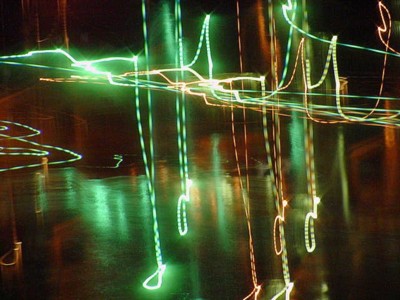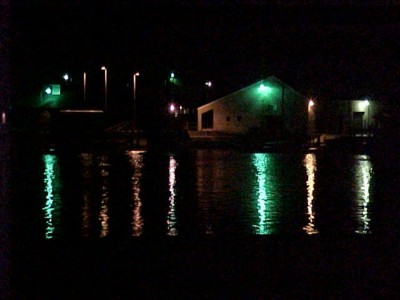With photography darkness (and the black color) is the canvas that you, the photographer, paints upon. The reason is simple. Black backgrounds and darkness do not expose the film or digital light sensors.
To that blackness then, light is added. Light does expose the digital light sensors by drawing against the black background thus creating the light pattern.
 Exposures are very tricky with 'light painting' because in a very short amount of time you can overexpose (meaning white out) bits or parts of the entire photograph. And once a photograph is overexposed it is ruined; pictorial information has been permanently lost. No amount of tweaking in PhotoShop, for example, can bring it back. You have brought those white areas to the maximum amount of exposure and by doing so have overwritten or blotted or maxed out any information that was there earlier.
Exposures are very tricky with 'light painting' because in a very short amount of time you can overexpose (meaning white out) bits or parts of the entire photograph. And once a photograph is overexposed it is ruined; pictorial information has been permanently lost. No amount of tweaking in PhotoShop, for example, can bring it back. You have brought those white areas to the maximum amount of exposure and by doing so have overwritten or blotted or maxed out any information that was there earlier.In addition to needing darkness to be your background, black is a powerful color and as a background for light painting images, it works very well in the finished composition.

Therefore you should look for places where lights are surrounded by darkness. For example, I used the different colored lights (different types of light sources) of the Duke Marine Laboratory in Beaufort, NC that were also reflected in the dark water as my starting point. I then used a telephoto setting to get closer to the subject.